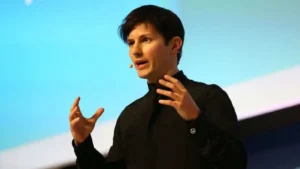
Summary
The realm of deepfakes and examine their consequences. We also provide tips on differentiating between deepfake and authentic videos. Additionally, we discuss the actions that authorities and content platforms may take to address this increasing problem.
Artificial Intelligence (AI) has revolutionized many aspects of modern life, from enhancing productivity to creating new ways of communication. However, it’s not without its darker sides, as seen in the rise of deepfakes. The debate over deepfake vs real videos has escalated, amplified by recent controversies involving high-profile individuals.
“Technology can be a tool of great power or peril. In the hands of the unscrupulous, the power of AI can be harnessed to create deepfakes, blurring the line between reality and fiction.”
The Dangers of Deepfakes
Deepfake technology has been around for decades, used in the movie and TV industry to create believable fictional worlds. However, advancements in AI technology have made these tools accessible to a broader audience. In the wrong hands, this technology can cause serious harm, such as damaging reputations and spreading misinformation.
Detecting Deepfakes: A Call to Action
Following the surge in AI-generated fake videos involving celebrities and politicians, a growing demand for robust deepfake detection mechanisms from regulatory bodies and content platforms has been growing. However, until such measures are widely implemented, it is up to the individual to discern between accurate and deepfake content. Here are some ways to do so:
1. The face and body do not match
Most deepfake tools mainly rely on face-swapping techniques. As a result, you can often spot a deepfake by closely examining the face and body proportions. AI-generated faces often look unnatural and out of sync with the body they are attached to. Additionally, AI tends to smooth out facial details like wrinkles and acne, resulting in an unnatural appearance.
2. Unnatural eye movements
Artificial intelligence struggles with rendering realistic eye movements, making this a valuable tool for spotting deep fakes. Look for unnatural eye movements or lack of blinking, as these are common signs of an AI-generated video.
3. Inconsistent skin tones
Deepfake videos often exhibit faces with skin tones that don’t match the rest of the body. Look for discrepancies in the skin color of the face and other visible body parts.
4. Short video length
AI algorithms need extensive training to generate realistic deepfakes. Consequently, most deepfake videos are short and often derived from social media or brief press clips.
5. Inaccurate audio
Despite advancements in AI, generating authentic audio remains a challenge. Most deepfake videos lack audio to hide these inaccuracies. Be vigilant for such inconsistencies when watching a video.
6. Use Google Images
If the above methods are inconclusive, Google Images can be helpful. Take a screenshot from the video and use Google’s ‘search by image’ option. This may yield the source of the original video or similar fake videos from other sources.
7. Look for ambient anomalies
Deepfake AI often overlooks details in the scene. Look for unnatural lighting, shadows, and general information. If something doesn’t seem right, it’s likely a deepfake.
Note: Always approach controversial video clips with skepticism. If something seems suspicious, report it to the social media platform and check the source’s authenticity.
Share the Article by the Short Url:




